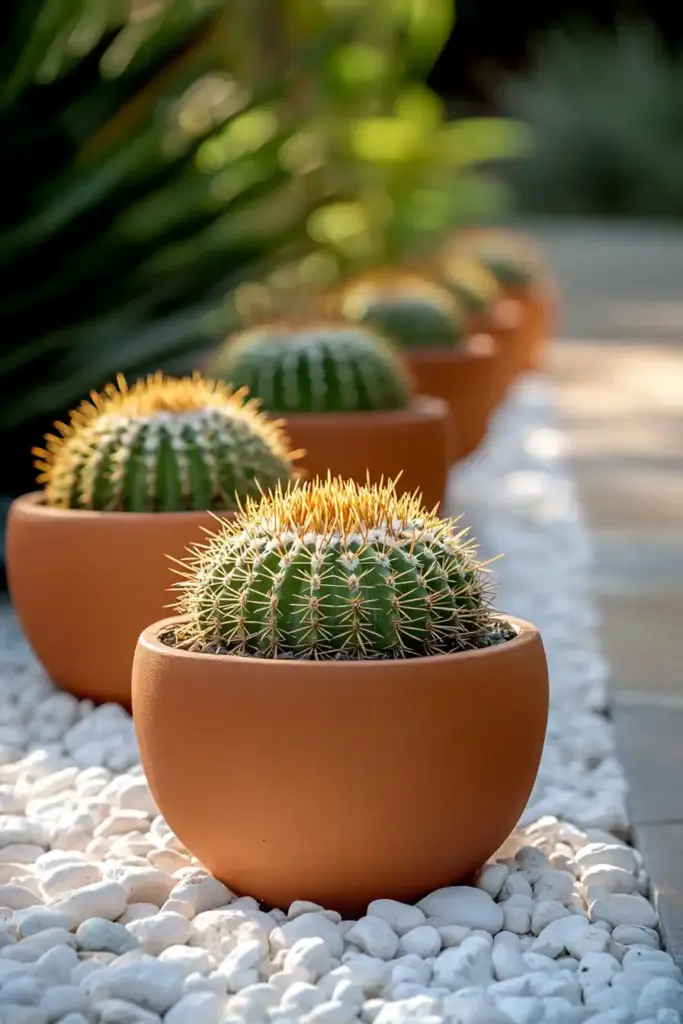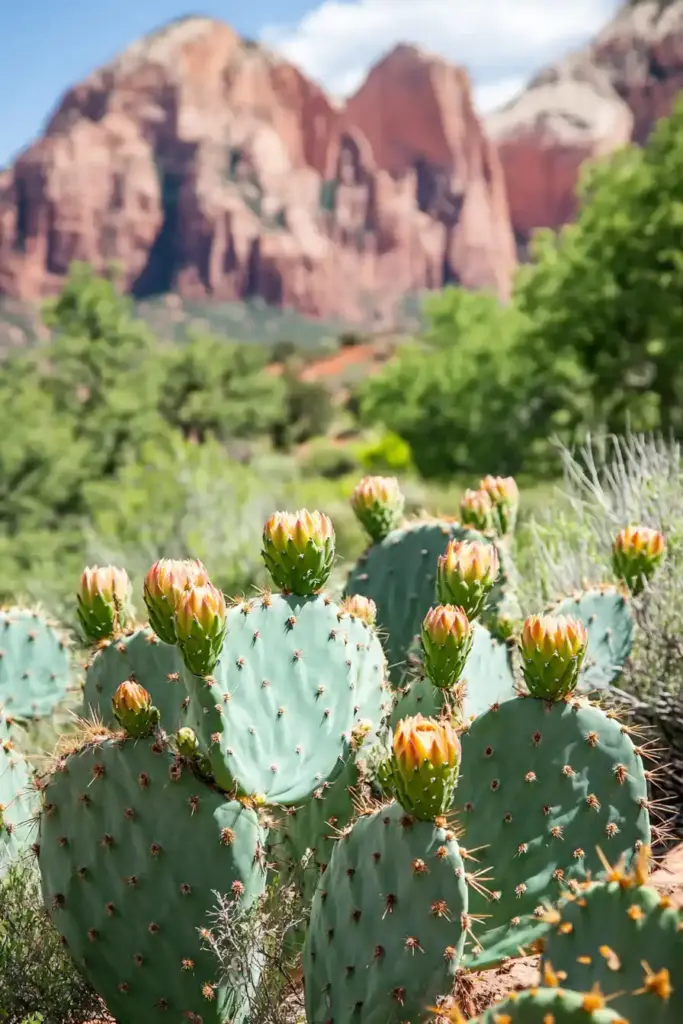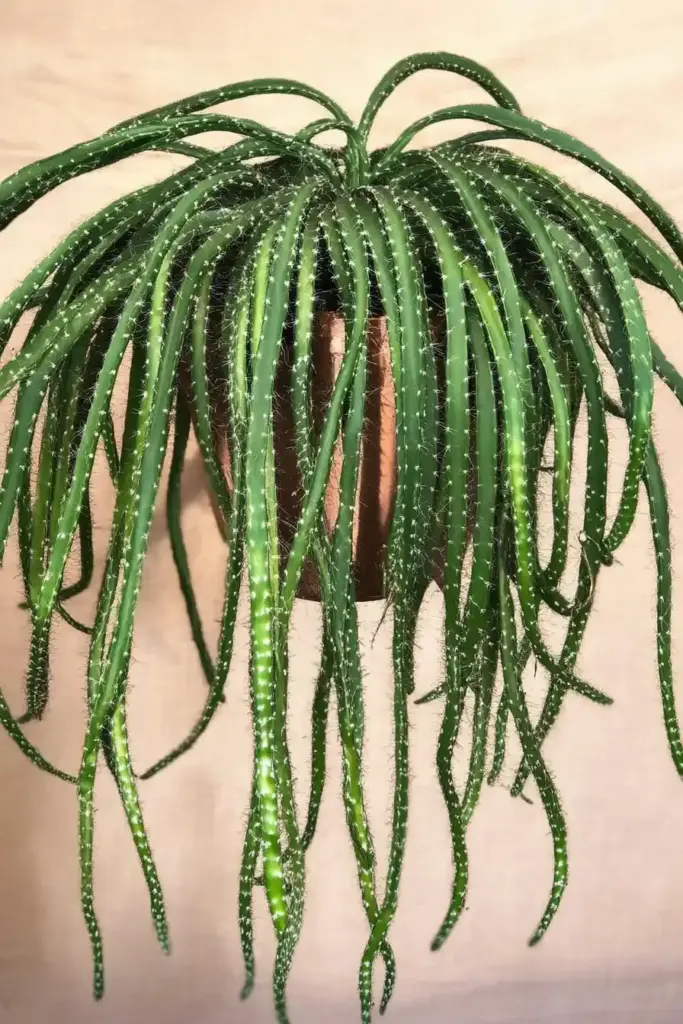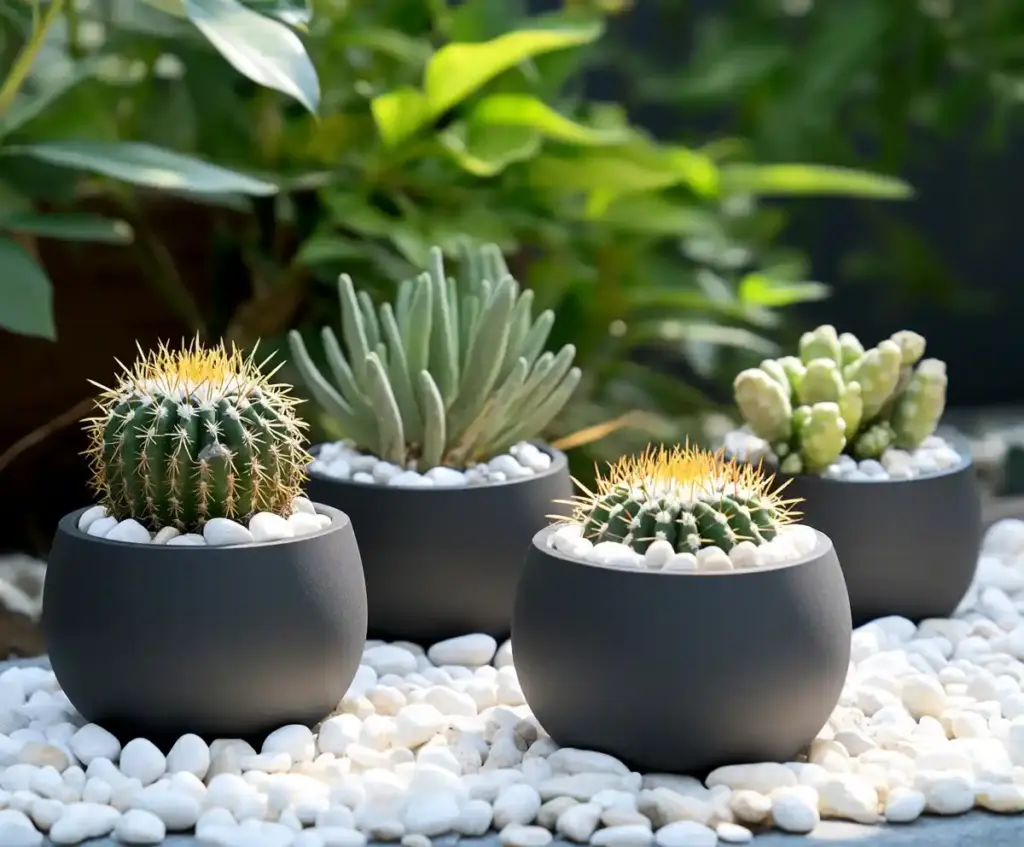When most people think of cacti, they often picture the same spiky green plant. But did you know there’s an incredible variety within the cactus family? In fact, there are hundreds of types of cactus plants, each with its own unique look, care needs, and personality.
If you’re just getting started with cactus gardening, it can feel overwhelming to choose the right one. That’s why we’ve put together this simple guide to the four most common types of cactus plants that are perfect for home growing. Whether you’re a beginner or looking to expand your collection, you’ll find these varieties easy to care for and endlessly fascinating.
1. The Golden Barrel Cactus (Echinocactus grusonii)
Description
Nicknamed the “Mother-in-Law’s Cushion,” the Golden Barrel Cactus is a true standout among the many types of cactus plants. Its perfectly round, ribbed shape is covered with bold yellow spines that catch the sunlight beautifully. While it rarely blooms indoors, the plant’s striking desert appearance more than makes up for the lack of flowers.
Growing Tips

- Sunlight: Loves full sun exposure — aim for at least 6 hours a day.
- Temperature: Thrives best between 50°F and 75°F.
- Watering: Water sparingly during spring and summer; completely stop watering during winter dormancy.
- Cold Caution: Protect it from frost — freezing temperatures can cause serious damage.
Safety Note: Be cautious when handling! Those sharp spines can puncture the skin easily.
Care Tips
- Soil: Use a fast-draining cactus or succulent mix.
- Fertilizer: During the summer growing season, feed every four weeks with a high-potassium fertilizer to promote health and growth.
- Container: Make sure your pot has excellent drainage holes to avoid root rot.
2. The Prickly Pear Cactus (Opuntia)

Description
Another fascinating member of the types of cactus plants family is the Prickly Pear, known for its unique flat, paddle-like pads. These pads not only look impressive but also produce beautiful, vibrant flowers in shades of yellow, orange, and red. As a bonus, both the pads and the colorful fruits are edible, making this cactus as functional as it is ornamental.
Growing Tips
- Propagation: Start from cuttings or seeds during the warmer months of spring or summer.
- Sunlight: Needs full sun for best growth and flowering.
- Soil: Plant in well-draining, sandy, or gritty soil to mimic its natural desert habitat.
Care Tips
- Watering: Once established, water deeply but infrequently — about every 3–4 weeks.
- Soil pH: Prefers slightly alkaline to neutral soils.
- Fertilizer:
- For young plants: Use a balanced 10-10-10 fertilizer.
- For mature plants: Switch to a lower nitrogen fertilizer like 5-10-10 or 0-10-10 to encourage better flowering and fruiting.
3. The Saguaro Cactus (Carnegiea gigantea)

Description
When people imagine the wild desert landscape, the towering Saguaro Cactus often comes to mind. As one of the most iconic types of cactus plants, this giant can live for up to 200 years and reach impressive heights of 40 to 60 feet in its natural habitat. Even young saguaros make striking houseplants with their tall, sculptural form.
Growing Tips
- Sunlight: Needs lots of direct sunlight—at least 6–8 hours a day.
- Temperature: Prefers consistently warm conditions. If you’re growing it in a cooler climate, bring it indoors when nighttime temperatures fall below 60°F.
- Indoor Growing: Place near a bright, south-facing window to simulate desert-like conditions.
Care Tips
- Watering: During the growing season (spring and summer), water moderately—allow the soil to dry out completely between waterings.
- Fertilizer: Feed every 2–3 weeks with a cactus-specific fertilizer during active growth months.
- Container Tips: Avoid oversized pots; saguaros have relatively shallow root systems and do better when slightly root-bound.
4. The Rhipsalis Cactus (Mistletoe Cactus)

Description
Not all types of cactus plants come from dry deserts — the Rhipsalis Cactus is a perfect example! Native to tropical rainforests, this epiphytic cactus features long, slender, cylindrical stems that gracefully hang down like a lush green curtain. Unlike its desert cousins, Rhipsalis doesn’t have sharp spines but instead boasts fine, hair-like structures, making it a soft and friendly choice for indoor gardens.
Growing Tips
- Propagation: Best propagated through cuttings, as growing from seeds is notoriously tricky.
- Potting Mix: Use a light, well-aerated mix — a blend of cactus soil, coconut coir, orchid bark, or fine gravel works beautifully.
- Location: Prefers bright, indirect light rather than harsh, direct sun.
Care Tips
- Watering: Water once a week, allowing the top inch of soil to dry between waterings.
- Overwatering Alert: Too much water can lead to weak, mushy stems and root rot — so less is often more!
- Fertilizer: Only begin fertilizing after the plant has matured for a year. Use a diluted cactus fertilizer to avoid overwhelming the delicate roots.
FAQ About Growing Different Types of Cactus Plants

What is the easiest type of cactus plant to grow for beginners?
The Golden Barrel Cactus and Prickly Pear Cactus are both excellent choices for beginners. They are hardy, require minimal watering, and thrive with plenty of sunlight and well-draining soil.
How often should I water different types of cactus plants?
Most cacti prefer deep but infrequent watering. During the growing season (spring and summer), water once every 2–4 weeks depending on the type of cactus and environmental conditions. Always let the soil dry out completely between waterings.
Can different types of cactus plants grow indoors?
Yes! Many types of cactus plants, such as the Rhipsalis and even young Saguaro cacti, can thrive indoors if they receive enough bright, indirect light and proper care.
What soil is best for cactus plants?
All cactus varieties need well-draining soil. A specialized cactus or succulent potting mix is ideal. You can also enhance drainage by mixing in coarse sand, perlite, or small gravel.
Do all cactus plants have spines?
Not necessarily. While many types of cactus plants, like the Golden Barrel and Prickly Pear, have prominent spines, others like the Rhipsalis Cactus have soft, hair-like structures instead of sharp needles.
Conclusion
Exploring the different types of cactus plants opens up a whole new world of gardening possibilities. From the sunny, desert-loving Golden Barrel and iconic Saguaro to the edible Prickly Pear and the rainforest-hugging Rhipsalis, there’s a cactus for every space and lifestyle.
Whether you’re aiming to create a drought-tolerant garden, add a low-maintenance indoor plant to your collection, or simply enjoy the unique charm of these resilient plants, starting with these four popular types is a great way to begin.
With the right care — plenty of light, well-draining soil, and occasional feeding — you’ll have healthy, thriving cacti that bring a touch of the extraordinary into your everyday life!


